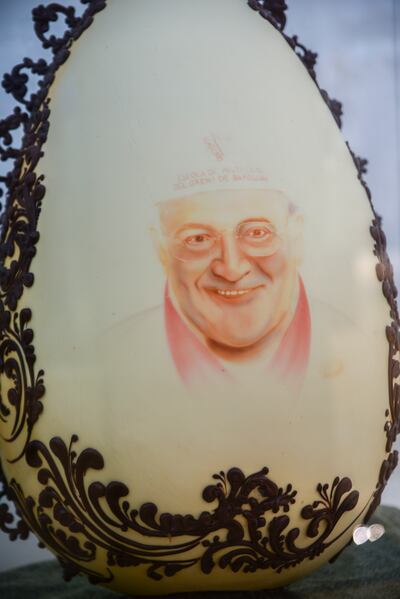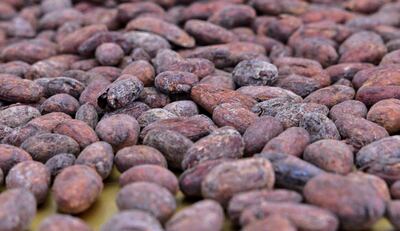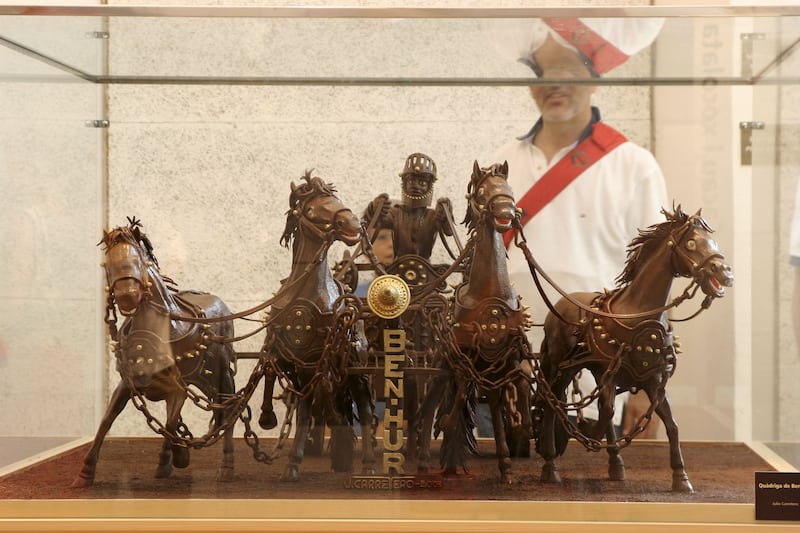For thousands of years, it was the sweetest secret of the Americas. Then, 500 years ago, a Cistercian monk took a risk that forever changed the European palate. In 1521, on board a ship from Mexico to Barcelona, he smuggled the ingredients and recipe needed to make chocolate.
The addictive treat quickly became popular in Spain before exploding across Europe in the centuries that followed. Yet, Barcelona is not widely recognised as having a deep connection with chocolate, compared to cities such as Brussels, Zurich and Paris.
On my last trip to the Spanish city, I came across a museum that aims to highlight this underappreciated link – the Museu de la Xocolata.
Inside this huge museum, located in the historic centre of Barcelona, I learnt that chocolate’s journey from the Americas to Europe is tied to two Spaniards – a monk and a conquistador. The latter man was Hernan Cortes, who helped lead Spain’s conquest of swathes of Central and South America in the 1520s.
It was in Mexico, in 1519, that Cortes made an unexpected find. He tasted a dark, rich beverage made from cacao beans, which was called cocoa. “The divine drink which builds up resistance and fights fatigue,” Cortes wrote of this discovery. “A cup of this precious drink permits man to walk for a whole day without food.”
By that stage, cocoa drinks had been consumed in this region for several millennia. Archaeologists have unearthed 5,500-year-old pots in Ecuador with traces of cacao beans, which to this day remain the key ingredient in chocolate.
A tropical tree that originated in the Amazon rainforest, the cacao measures between four metres and six metres in height, grows best at 500 metres to 800 metres above sea level, and requires high humidity and consistent temperatures in the 20°C to 30°C range. The melon-shaped fruit normally weighs between 300 and 500 grams, and contain up to 50 cacao beans.
The chocolate drink Cortes first encountered was too potent for European tastes, so the Spaniards softened its bitterness. This dilution was achieved by infusing it with sugar, cinnamon and vanilla to create an aromatic hot drink. The flavour of this beverage was not greatly different from modern-day hot chocolate.
It was not Cortes who brought chocolate to Europe, though. Some historians argue Italian explorer Christopher Columbus completed the task, while others – including the Museu de la Xocolata – pin that achievement to Fray Aguilar, a Spanish Cistercian monk.

The museum claims this sweet treat left the Americas on a "chocolate breeze". That was the Mexican name given to the favourable winds that helped vessels head from the Americas to Europe. When Aguilar brought the first load of chocolate to Europe in 1521, it was unpacked at the Barcelona port by dock workers who had no idea what it was, let alone what it would eventually become.
The cacao beans and a written recipe for chocolate were immediately transported to Monasterio de Piedra, a remote lakeside monastery 330 kilometres west of Barcelona.
Already, the owners of this chocolate shipment saw it as a rare and valuable commodity that should be reserved for the privileged few, not shared with the working class. The first chocolate drink made in Europe was prepared in the kitchen at this monastery, overlooking the pristine Lake del Espejo.
So special was chocolate in the eyes of Spain’s Cistercian monks that they turned its consumption into a form of ritual. They had designated chocolate rooms in their monasteries where they’d gather after prayers to savour the drink.
Chocolate stayed a secret of sorts for many decades thereafter. Like caviar or truffle, it was an expensive, exquisite delicacy, not freely available to commoners. Its recipe was closely guarded and its key ingredient, cacao, was difficult to come by, having to be shipped from the Americas.

It wasn’t until the early 1600s that chocolate managed to sneak out of Spain, according to the museum. A Spanish princess gave it as a gift to the King Louis XIII of France at his wedding in 1615. Within decades, it was being savoured by the upper classes of many European countries.
In that same century, chocolate also evolved from being just a delicacy to being used as medicine. In the 1680s, British naturalist and physician Hans Sloane made discoveries about the curative powers of chocolate while researching in Jamaica. He brought this drink back to England and began selling it as an elixir that reportedly aided digestion.
Barcelona was also responsible for another leap forward in chocolate’s evolution when, in 1777, the first machine for creating chocolate was invented in that city. Some 50 years later, the chocolate press further reduced the manual labour involved in creating the delicacy. It crushed the roasted cacao beans with such force as to create cocoa powder.
Even still, chocolate wasn’t yet at its peak owing to the limited supply of its key ingredient. It wasn’t until cacao trees were planted by the Portuguese in tropical West Africa, and then cultivated there in the 1870s, that its beans became plentiful. And chocolate finally reached the masses of Europe. No longer was it a preserve of the wealthy; anyone could easily buy chocolate, which now came in solid form.
In the 1800s, chocolate makers across Europe began experimenting with mixtures that turned this drink into a food. A combination of cocoa powder, cocoa butter and sugar formed the first commercially available chocolate bar, sold in 1847 by British chocolate company JS Fry & Sons.
By the start of the 20th century, chocolate had come to rule Europe. It was widely sold and eaten in every country on the continent. All kinds of flavours and fillings were incorporated to make it even more versatile and so appealing to consumers with varying tastes. This chocolate revolution, kick-started by a monk, a conquistador and the city of Barcelona, continues to this day as chocolatiers in the UAE and across the world brew cacao-rich concoctions to tempt modern-day connoisseurs.






